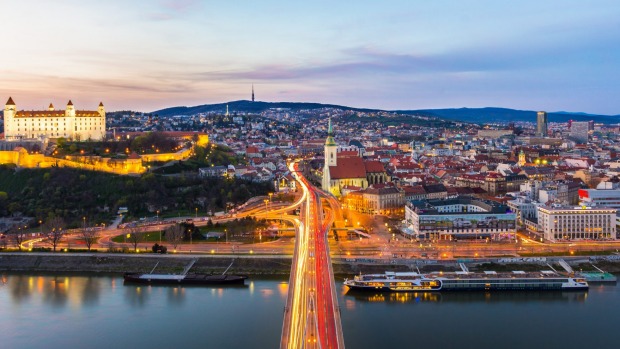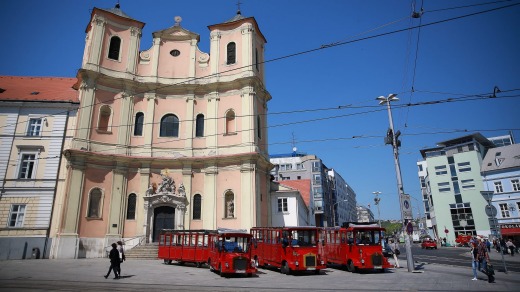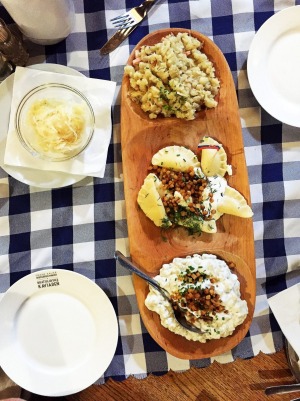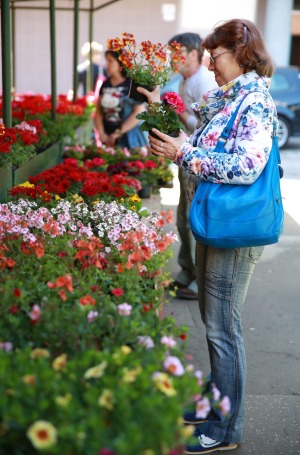
I'm catching the train from Vienna to Bratislava in the morning and the most important thing I need to know is this: what will I eat for lunch? There's no question, says Frank Riapos. I must find my way to Flagship and there I must order bryndzove halusky, a Slovak folk dish of potato dumplings and sheep's cheese.
Riapos is the go-to guy for matters Slovakian, for though he speaks with an American accent he was born in Slovakia (then Czechoslovakia) and later migrated to the US with his parents. The pull of home was irresistible, though: Riapos now spends his days as a cruise director with Scenic, floating up and down the Danube and waving as the ship passes through the heart of his homeland's capital, Bratislava.
It's just a puff of land, this Slovakia, squeezed between Austria, the Czech Republic, Hungary, Ukraine and Poland. Despite its historic origins, it is a youthful country: Czechoslovakia's dissolution in January 1993 led to a "Velvet Divorce" and the creation of two separate states, the Czech Republic and Slovakia. The latter, by far the less well-known by-product of that historical schism, occupies a fragment of eastern Europe swathed in the beautiful Carpathian Mountains and bequeathed a charming old city that nestles into a bend on the Danube. At last it is attracting the attention long taken for granted by cities like Prague and Budapest.

But who knows where Austria ends and Slovakia begins? So close are these two neighbours the border could lie anywhere between the freshly ploughed fields – are those potatoes being planted in anticipation of halusky production? – and the whirring windfarms that flash by as I whiz along on the 10.21 from Vienna's Wien Hauptbahnhof. An hour later I have arrived in a new country. Welcome to Slovakia, says the sign at Bratislava's Main Station.
It is almost lunch time. I make my way along Prazska Street and then Sancova Street, lined with buildings from whose regal bay windows so much of this country's history – protests, marches – must surely have been witnessed. A market close by sells bright geraniums and poppies and mounds of cold climate vegetables: potatoes, radishes, spring onions, parsnips. My stomach grumbles.
The stately Stefanikova Street leads me all the way down to the surprisingly modest Presidential Palace. Trees are flushed with the first leaves of spring and graffiti blooms here, too: "Nazis are losers!" someone has stencilled, Banksy-style, on a wall. Finally, right on the square where the Velvet Revolution (precursor to the Velvet Divorce) was played out, I find Flagship.

This establishment's Slovak name is Bratislavska Restauracia, and it is a three-storey composite of rescued and replicated artefacts from buildings that existed in Bratislava in the old days. The menu makes for amusing reading: dishes' names and descriptions are translated into English and an illustrated sequence explains in detail the preparation of the Slovak folk dish I have come in search of: the sweating farmer sows his potatoes then finds time to play the fujara (a shepherd's flute) while awaiting harvest; his wife brings sheep's milk cheese down from the mountains; potatoes are transformed into dumplings (halusky) and combined with the cheese (bryndza) and the result is a happy pairing named bryndzove halusky.
In the end, I order a platter featuring cheese-filled pierogi and two types of halusky – one with sheep's cheese, the other with cabbage. The potatoes-and-cheese combination is piquant, comforting, honest. A happy marriage, I would say, in a country getting along just fine after its divorce.
www.bratislavskarestauracia.sk/en

Bratislava is about 70 kilometres from the Austrian capital, Vienna. Trains run hourly between the two cities. Return tickets cost about $24 and can also be used on trams and buses in Bratislava.
Scenic's 2016 15 Day Jewels of Europe River Cruise sails from Amsterdam to Budapest via Germany and Austria on one of its next-generation Space-Ships. The cruise passes by Bratislava en route to its final destination of Budapest, but does not stop there; instead, an optional side trip from Vienna is included in the itinerary. Prices start at $7295 a person twin share, including free flights to Europe. See www.scenic.com.au